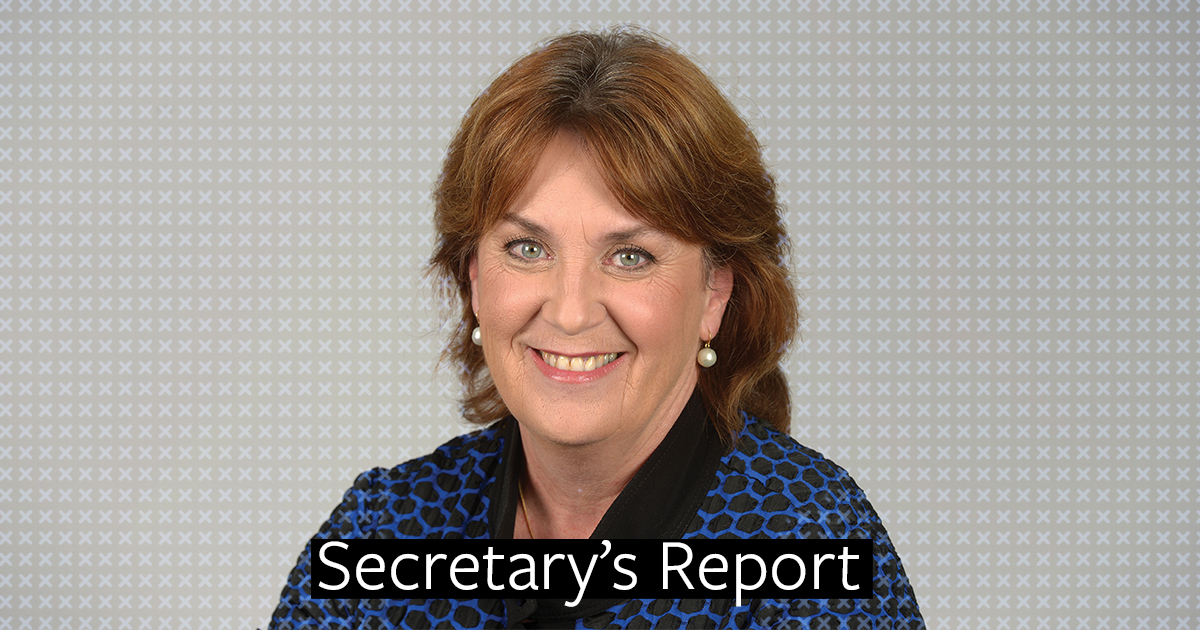
Despite recent sensational headlines, the number of registered and enrolled nurses and midwives remains stable and continues to increase both nationally and in Victoria.
This is a reflection on the integrity, commitment and resilience of Victoria’s 124,595 nurses and midwives who are beyond exhausted.
Resilience is not unlimited. That’s why ANMF continues to work with members, employers and the Andrews Government to implement measures to reduce, where we can, the pandemic pressure. This includes the introduction of the student employment models (Registered Undergraduate Students of Nursing – RUSONs and Registered Undergraduate Students of Midwifery – RUSOMs), the midwifery initiatives, the hospital support surge allowance and a replacement workforce for the testing and vaccination hubs so nurses and midwives can return to their workplaces to support their colleagues.
Nurses and midwives are working overtime and double shifts in hot and uncomfortable PPE that also causes facial injuries. But it is important to know the facts.
Nursing and Midwifery Board of Australia (NMBA) data shows consistent registration renewal rates, due by 31 March each year, are at more than 96 per cent of the workforce, including during the pandemic years.
| Annual registration renewal rate of currently registered nurses and midwives | ||
| year | percentage of registered and enrolled nurses and midwives | total renewals |
| 2021 | 96.4% | 423,480 |
| 2020 | 96.1% | 407,946 |
| 2019 | 96.2% | 390,100 |
Source: Nursing and Midwifery Board of Australia
The NMBA data also shows the workforce is growing. Importantly experienced nurses and midwives continue to comprise the largest sections of the workforce. The numbers of new nurses and midwives is also increasing.
These are important nursing and midwifery workforce trends in any year and more so in a pandemic.
| Total national practicing registered and enrolled nurses and midwives | ||||
| September NMBA reports | Total registered and enrolled nurse | Total nurse/midwife | Total midwife | Total |
| 2021 | 432,855 | 29,669 | 6678 | 469,202* (+ 30,094) |
| 2020 | 404,723 | 28,134 | 6251 | 439,108* (+35,576) |
| 2019 | 371,902 | 26,047 | 5583 | 403,532 (+12,947) |
| 2018 | 359,059 | 26,458 | 5068 | 390,585 (+13,030) |
| 2017 | 346,013 | 27,015 | 4527 | 377,555 |
Source: Annual Nursing and Midwifery Board of Australia September registration data reports
*includes the sub-pandemic register established in 2020
In 2021 there are 2151 more Victorian registered nurse/midwives and 379 more direct entry midwives than there were five years ago. The slow growth rate of Victorian midwives does continue to be a concern, though these figures may also reflect those nurse/midwives who no longer wish to retain their midwifery registration.
This is why the ANMF will again be asking the Andrews Government to continue to focus on the postgraduate midwifery employment model in the coming state election. ANMF also encourages eligible members considering undertaking a midwifery postgraduate to apply for an ANMF fee grant which will cover 80 per cent of tuition costs. The grants will open in January 2022.
| Total Victorian practicing registered and enrolled nurses and midwives | ||||
| September NMBA reports | Total registered and enrolled nurse | Total nurse/midwife | Total midwife | Total |
| 2021 | 114,709 | 8,256 | 1,630 | 124,595 |
| 2020 | 108,086 | 7,783 | 1,591 | 117,460 |
| 2019 | 98,869 | 7,198 | 1,477 | 107,544 |
| 2018 | 95,483 | 7,213 | 1,337 | 104,544 |
| 2017 | 91,524 | 7,277 | 1,251 | 100,052 |
Source: Annual Nursing and Midwifery Board of Australia September registration data reports
Nurses and midwives are feeling the brutal fatigue of the pandemic and the recent rise in COVID-19 hospitalisations. Declining COVID 19 patients will provide little relief when the public and private systems try to catch up with the delayed care of non-COVID patients.
This is an extraordinarily challenging time, but it is important to know nurses and midwives are not giving up their registration in their thousands. And for the second year in a row our VCE students are nominating undergraduate nursing studies as their first preference in very large numbers, with six of Victoria’s nine tertiary institutions reporting nursing as the most preferred study.
We can never take our eye off the ball when it comes to workforce – but it isn’t all doom and gloom as some would like us to believe. Our Victorian members should be proud of the work that they do and the positive influence they and their work has had on others who want to follow in their footsteps.

